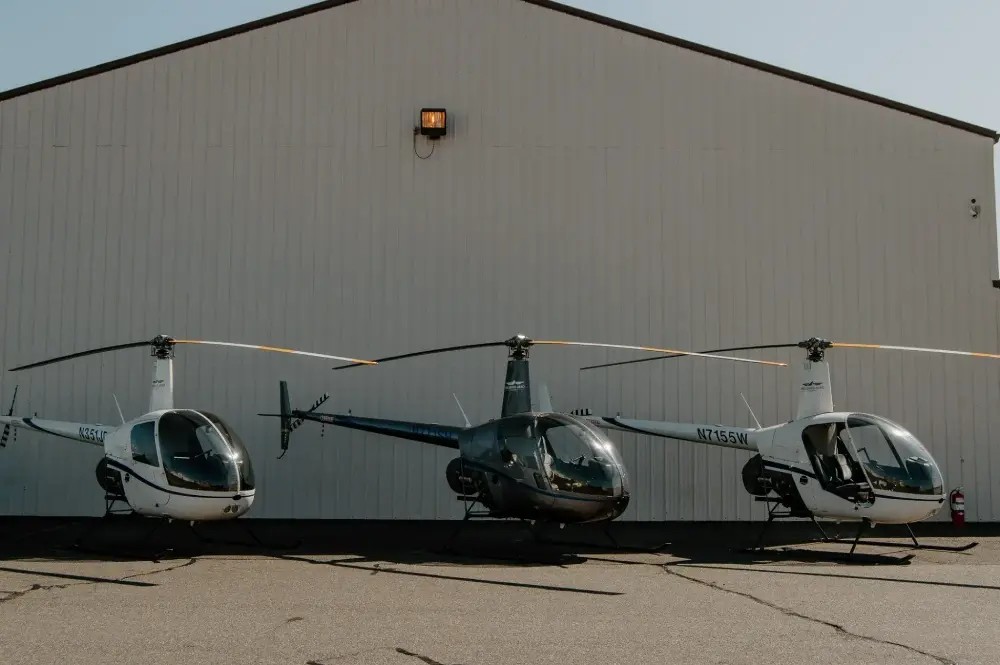Have you ever dreamt of soaring above the cityscape, maneuvering a helicopter through majestic mountains, or embarking on thrilling aerial adventures? Learning to fly a helicopter can be an exhilarating and rewarding experience, transforming this dream into reality. But can anyone learn? This comprehensive guide will explore the steps involved in obtaining a helicopter pilot license, outlining the requirements, training, and examinations necessary to navigate the skies confidently.
Understanding Helicopter Pilot Licenses
The journey begins with understanding the different types of helicopter pilot licenses. Each license caters to specific purposes and demands varying skill levels and qualifications. The three primary licenses are:
Private Pilot License (PPL)
The PPL allows you to fly helicopters for personal recreation but not for commercial purposes. Requirements include:
- Minimum age of 17
- Passing an FAA written exam
- Logging at least 35 flight hours, including solo flights and specific training maneuvers
- Demonstrating proficiency in navigation, emergency procedures, and regulatory compliance during a practical flight test
The PPL is the foundation for aspiring helicopter pilots, providing invaluable experience for future aviation endeavors.
Commercial Pilot License (CPL)
The CPL is essential for a professional career as a helicopter pilot. It allows you to fly for compensation or hire. Requirements are more rigorous than the PPL and include:
- Minimum age of 18
- Holding a PPL
- Obtaining an FAA medical certificate
- Completing ground school, passing written, oral, and practical FAA exams
- Logging a specified number of flight hours, including dual instruction, solo flight, and cross-country flights
- Completing instrument training
A CPL opens doors to diverse career paths like aerial photography, firefighting, search and rescue, and tourism.
Airline Transport Pilot License (ATPL)
The ATPL is the highest level of helicopter pilot certification, required for airline operations. It demands extensive training and experience:
- Holding a CPL and an Instrument Rating
- Minimum age of 23
- Accumulating 1,200 flight hours
- Passing rigorous FAA written, oral, and flight tests
- Maintaining a First-Class FAA Medical Certificate
Meeting FAA Eligibility Requirements
Beyond choosing a license, aspiring pilots must meet Federal Aviation Administration (FAA) eligibility requirements:
Age and Citizenship
Minimum age requirements apply to each license (17 for PPL, 18 for CPL, 23 for ATPL). While U.S. citizenship isn’t mandatory for all licenses, proof of residency and identification are necessary for flight training enrollment.
Medical Certification
A medical certificate, obtained through an FAA-approved medical examination, is crucial to ensure physical fitness for flying. The class of medical certificate required varies by license type (typically third-class for PPL, second-class for CPL, first-class for ATPL).
Language Proficiency
English language proficiency is essential for effective communication with air traffic control and other aviation personnel. Non-native English speakers may need to demonstrate proficiency through specific tests or training.
Flight School and Ground Training
Choosing a reputable flight school is paramount. Ground school provides the theoretical foundation:
- Helicopter systems
- Aviation regulations
- Navigation techniques
- Meteorology
- Emergency procedures
Acquiring Practical Flight Experience
Flight instruction, guided by certified flight instructors, translates theory into practice. This hands-on training covers:
- Basic flight maneuvers (takeoffs, landings, hovering)
- Advanced techniques (autorotation)
- Emergency procedures
- Navigation and flight planning
- Communication protocols
- Pre- and post-flight inspections
Logging flight hours is essential to meet license requirements. Each flight must be documented in a pilot logbook.
Passing Written and Practical Exams
The final hurdle involves passing rigorous FAA exams:
Written Knowledge Test
This multiple-choice exam assesses theoretical knowledge of aviation regulations, meteorology, navigation, and helicopter systems. Thorough ground school preparation and practice exams are crucial.
Practical Flight Test
This in-flight evaluation assesses practical flying skills, encompassing normal and emergency maneuvers. The examiner evaluates proficiency in handling the helicopter and adhering to safety protocols.
Is Learning to Fly a Helicopter Achievable?
While demanding, learning to fly a helicopter is achievable with dedication, commitment, and the right training. It’s a challenging but rewarding pursuit, offering a unique perspective and potentially a fulfilling career.
